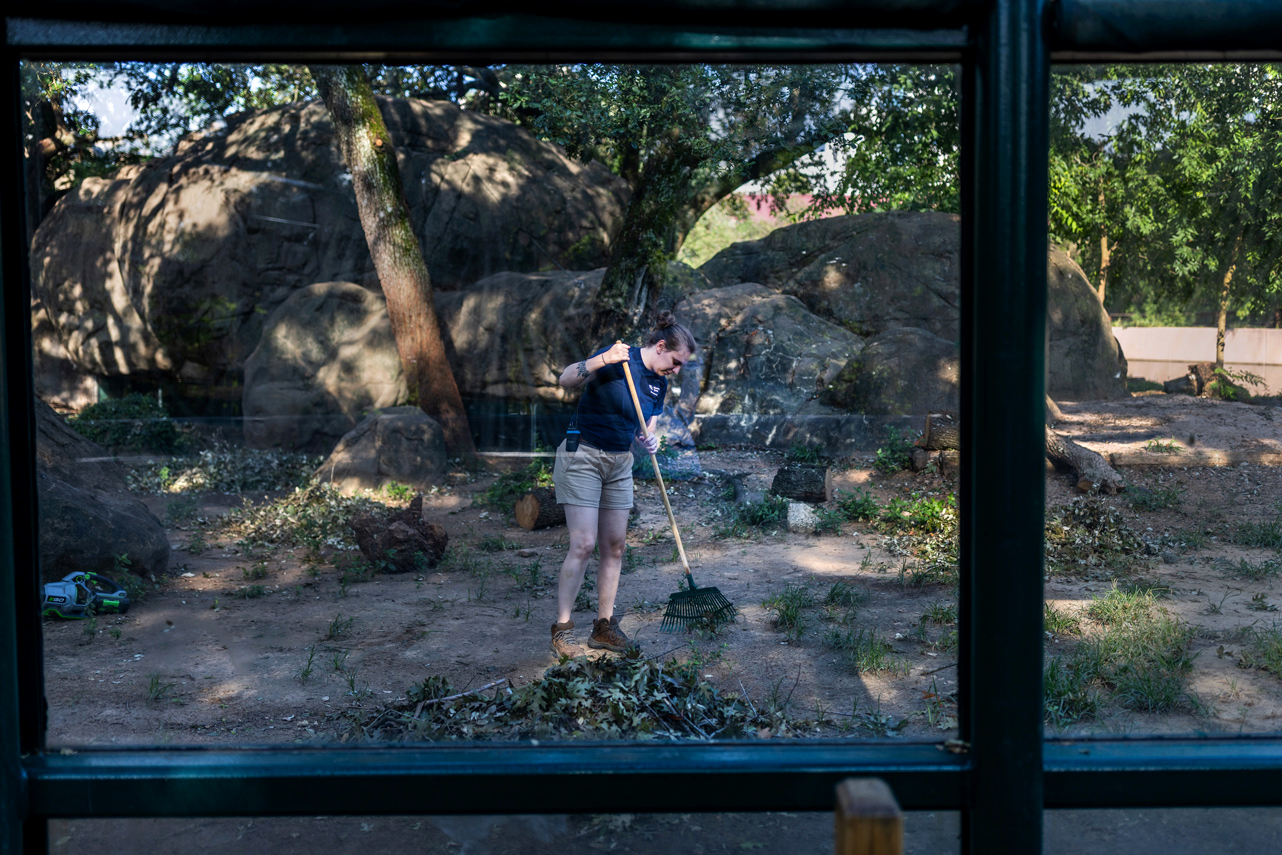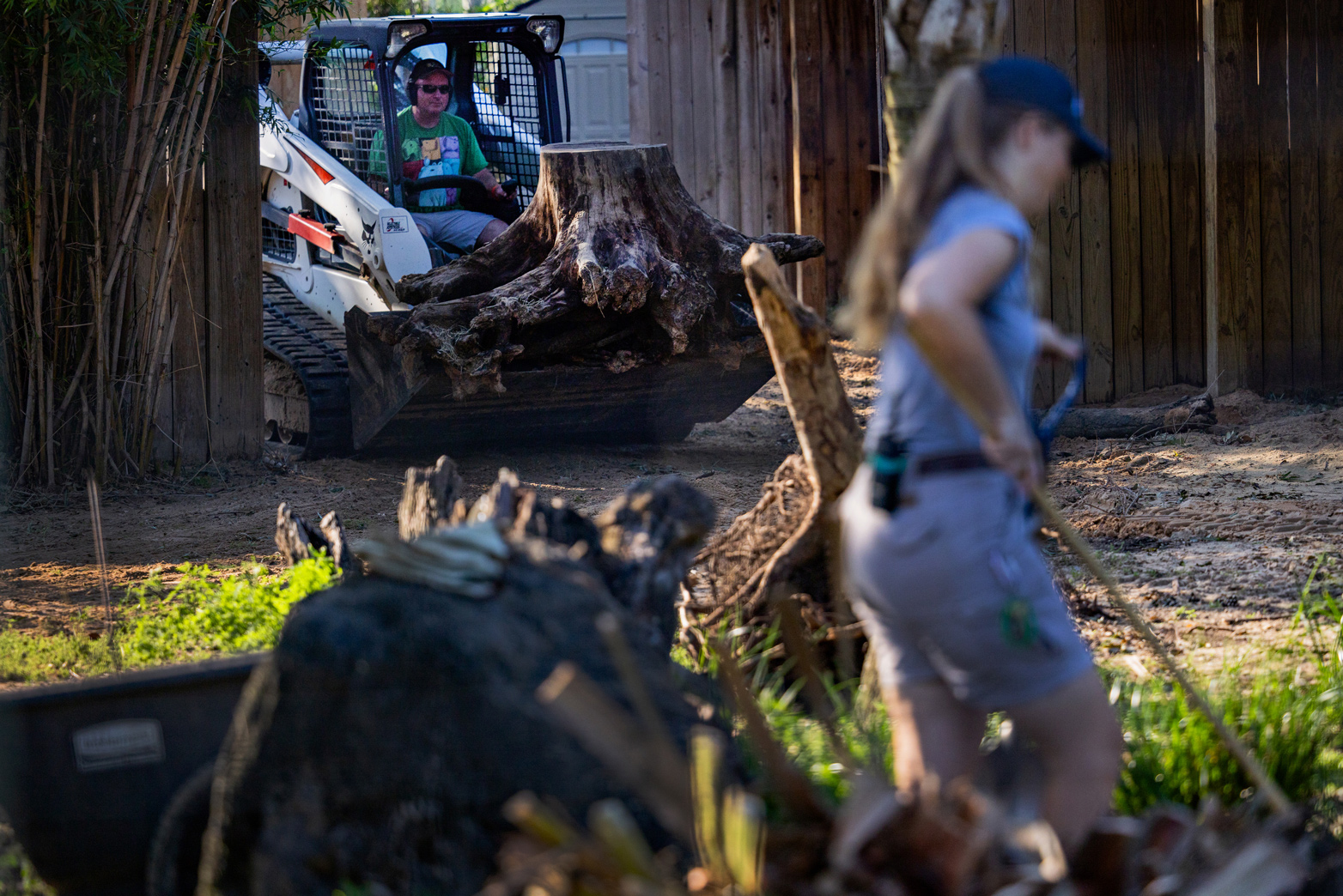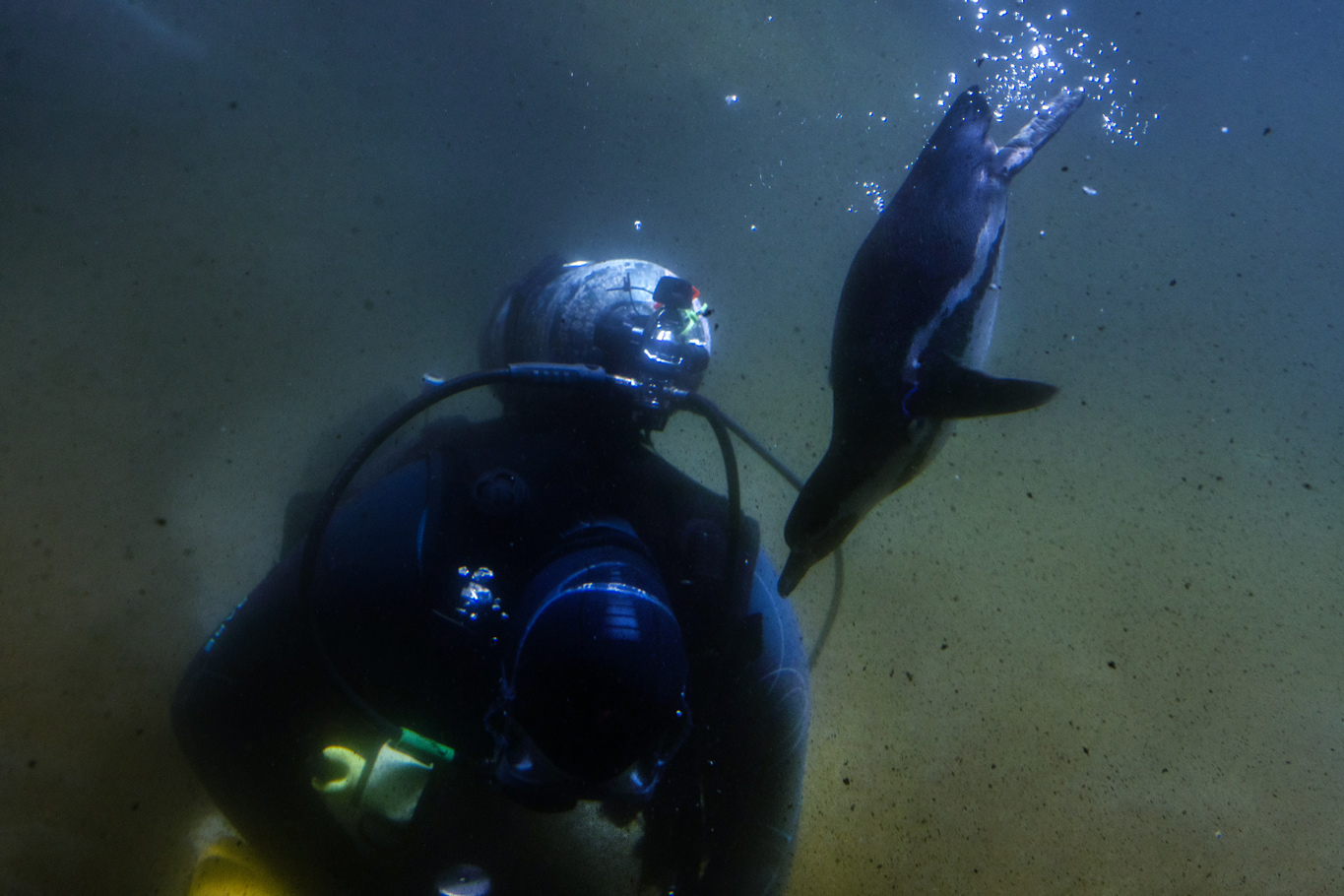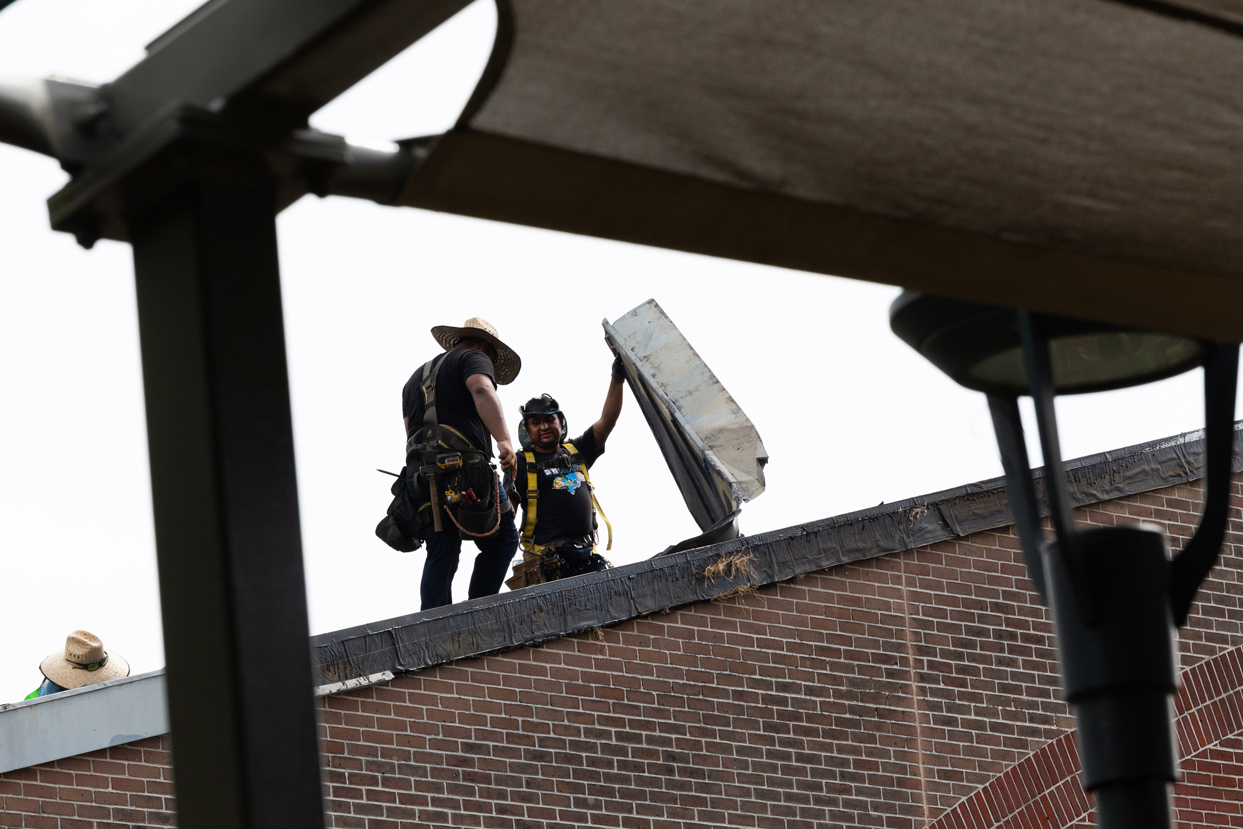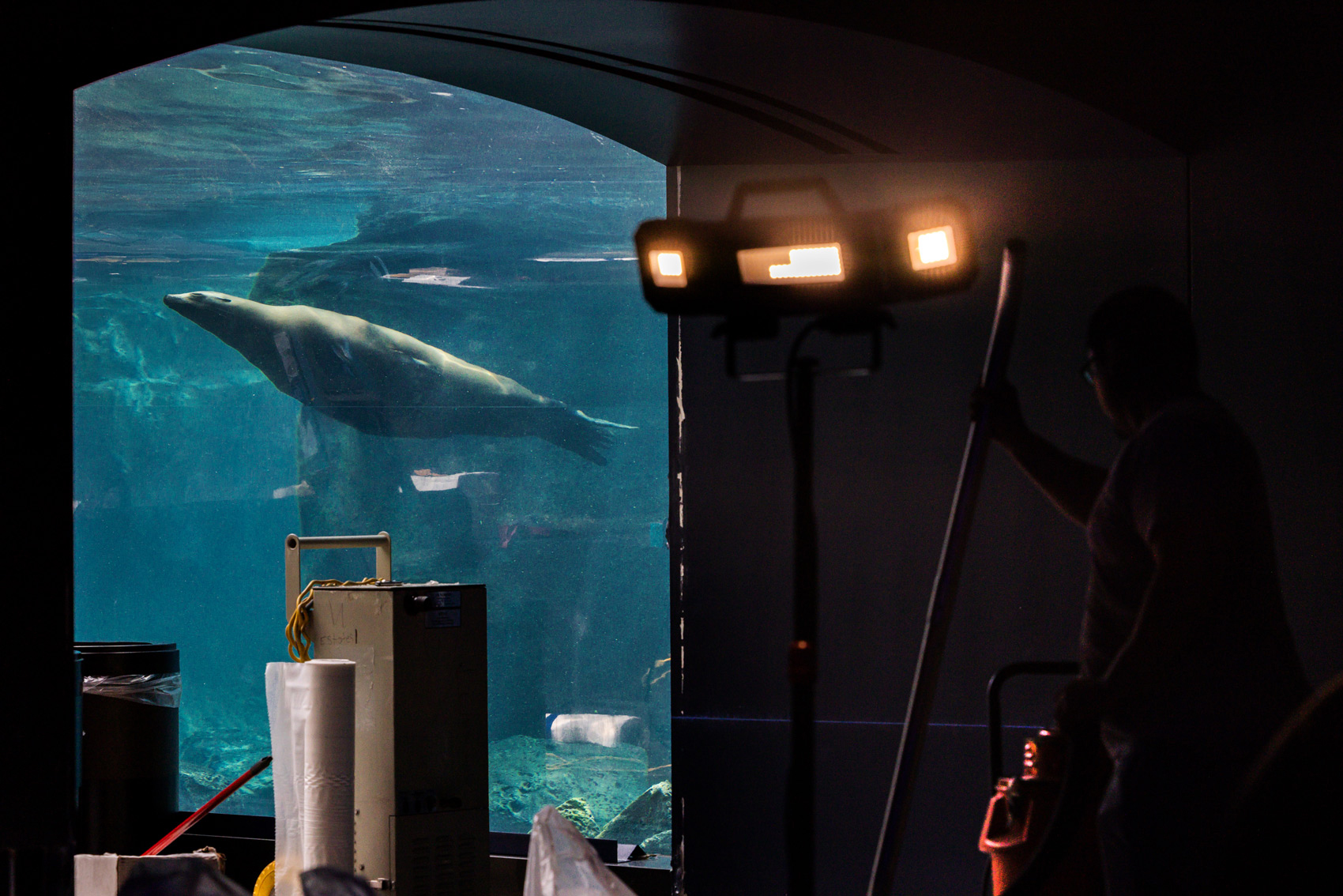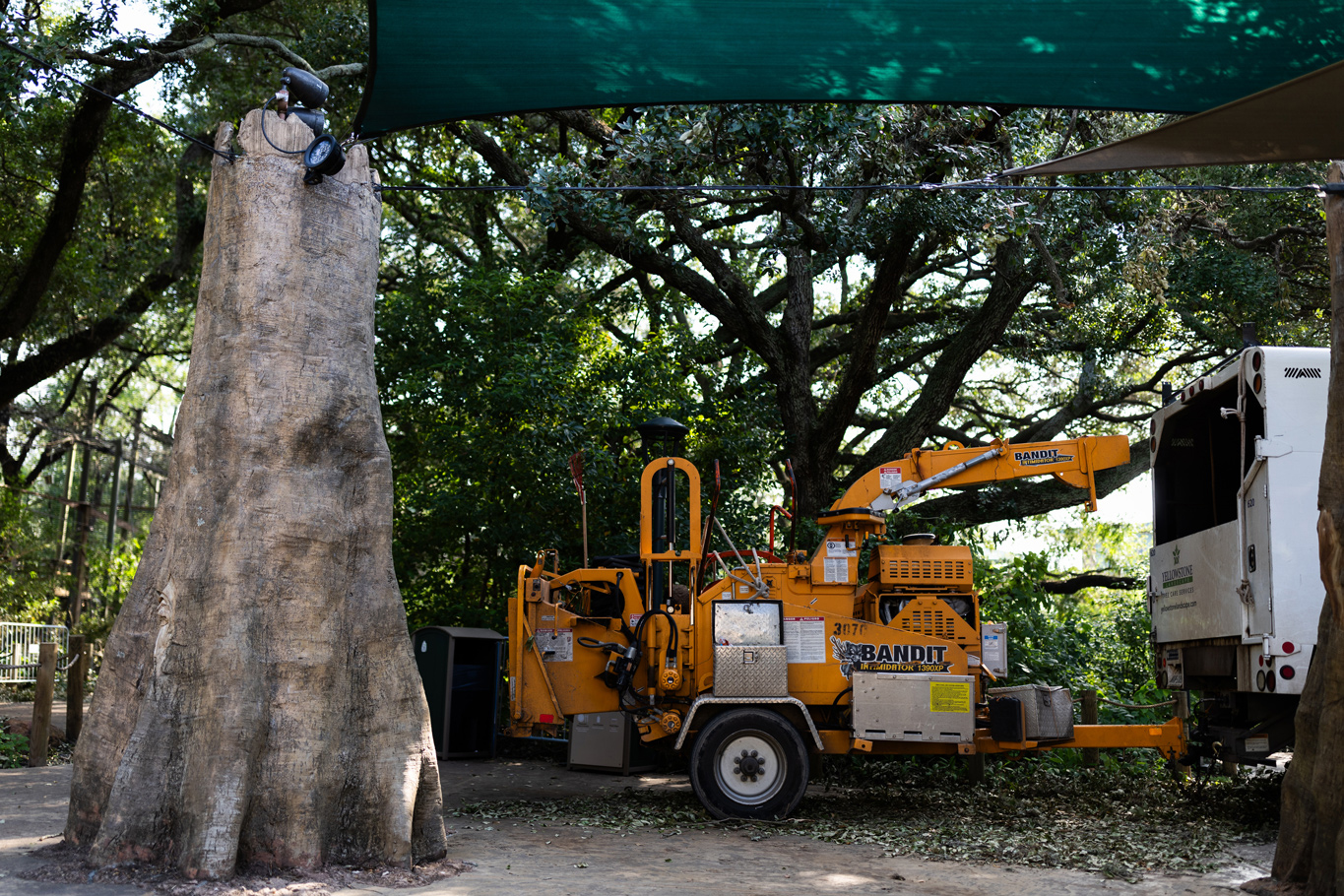|
Getting your Trinity Audio player ready...
|
Elephants can smile. That little curve below their trunks as they play is actually exactly what it looks like: A declaration of happiness. Mischief, even, sometimes. And early on Thursday morning the Houston Zoo’s younger elephants — namely Teddy — are grinning. Not quite from ear to floppy, oversized ear, but enough to make one Google: “Do elephants smile?”
About 72 hours after Hurricane Beryl hit Houston, Teddy and the other elephants at the zoo have more to smile about than many Houstonians, as more than 1 million people are still without power, and another thunderstorm looms in the distance, dimming the sky and weighing down the air. Their enclosure was unharmed by Monday’s storm, and the parts of the zoo that did see damage have turned into a boon for them.
A short walk away, outside the exhibit for the bongos — a striped antelope that hails from sub-Saharan Africa — a large oak tree cracked under the weight of Monday’s 75-mile-per hour-plus sustained winds. It fell, thankfully, away from the animal enclosure, instead creating a solid wood-and-leaf barrier across the pedestrian path.
And now this once-majestic oak is about to become something new altogether: An elephants’ playground.
Kristin Windle, the zoo’s elephant supervisor, spots a crew working to clear out the tree, now split into hefty logs. To the average zoogoer, this looks like wood. But to zookeepers, like Windle, it’s “browse” — edible vegetation that can be used as enrichment for the animals.
“Can we take these to the elephants?” she asks.
The elephants will eat the leaves and push around the logs. Tucker, an elephant who has retained his youthful cheekiness despite being a decade-and-a-half older than Teddy, has been tucking browse into the curve of his trunk and frolicking about with it all week.
“Honestly,” says Tarah Cornelius, the zoo’s director of animal care, “the elephants are living their best lives.”
An extended closure
The damage at the zoo has been “revealing itself” over the course of the week, according to Jackie Wallace, the zoo’s assistant vice president of communications and public affairs.
Zoo officials announced Sunday that they would close the 55-acre park Sunday and Monday in anticipation of a Monday landfall. Sunday night a “ride-out” crew hunkered down on the grounds to ensure the animals stayed safe (they did), and no enclosures were breached (they weren’t). Even before the hurricane pushed away from Houston, that crew began assessing damage.
By Monday afternoon, it was obvious the closure would have to extend through Tuesday. Then on Tuesday, came the announcement that the closure would continue through Thursday. On Wednesday, the zoo said it would remain closed through Friday. On Friday, the Zoo decided to open its gates beginning Saturday, offering reduced-price tickets — aptly set at $7.13 to celebrate Houston's area code on July 13 — for both Saturday and Sunday.
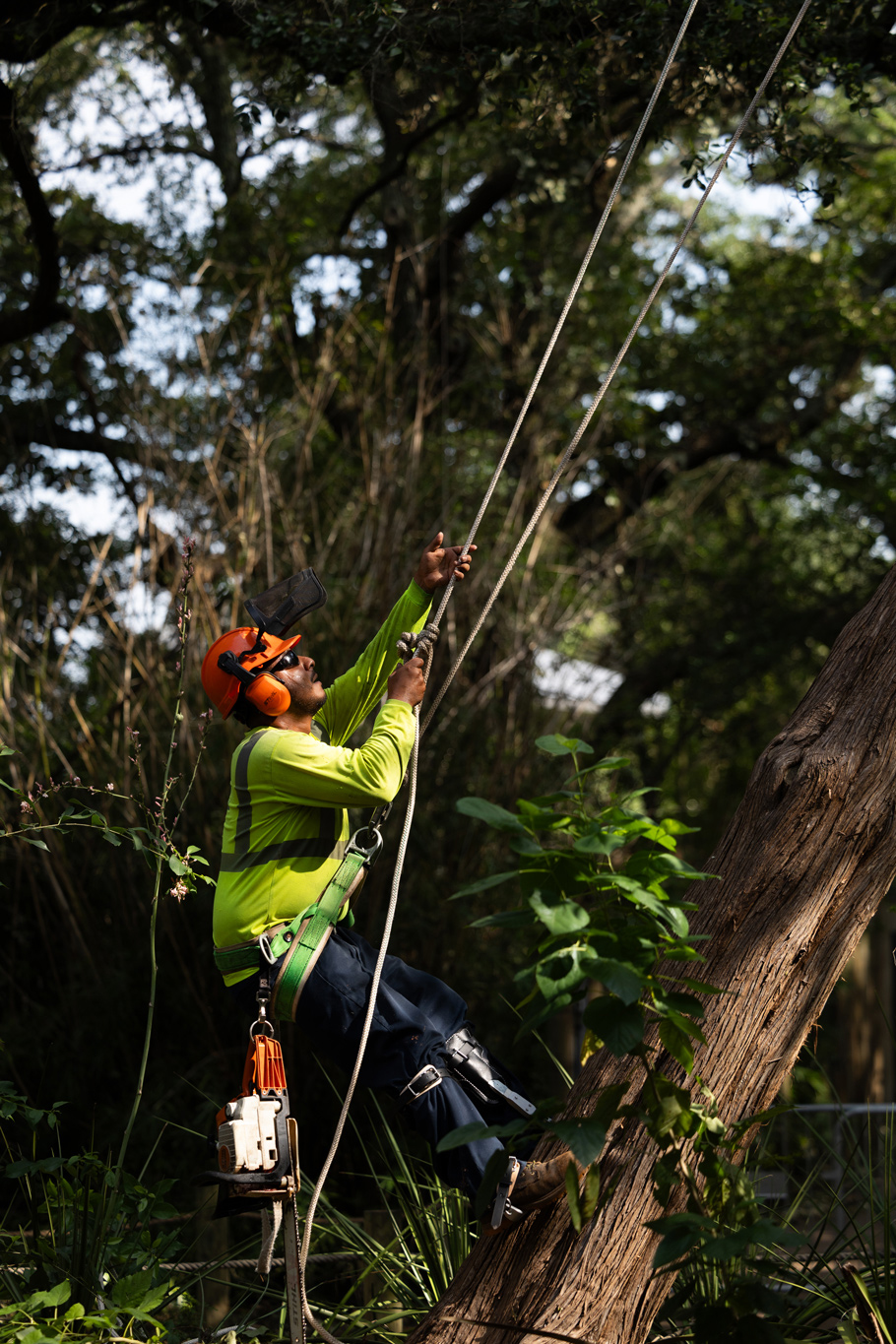
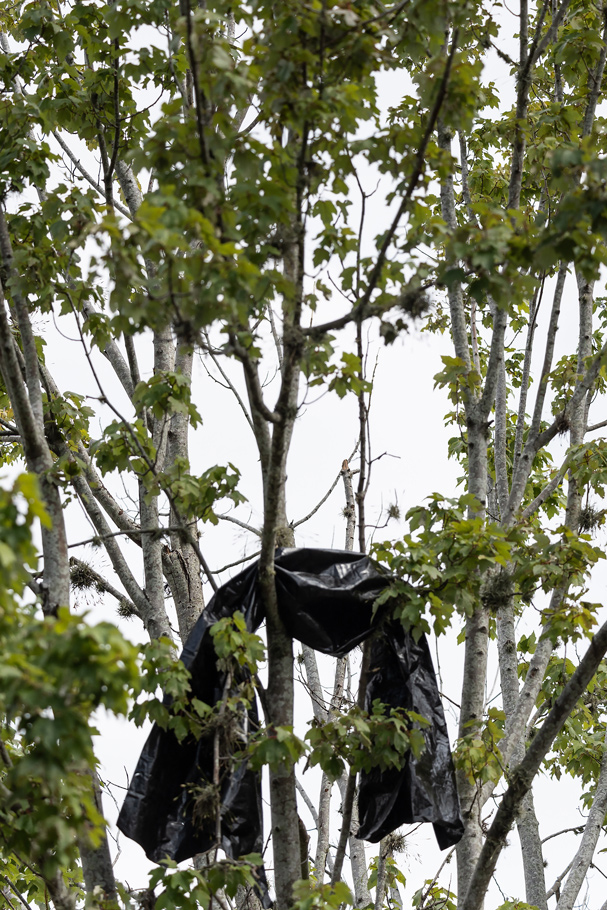
“Once we started clearing some of this stuff away, that’s when you see that there was a giant branch you didn’t know about dangling over the pathway,” Wallace says. As the devastation revealed itself, so too did other problems: The zoo needed a skilled crew of tree experts to begin hacking and stacking the tree debris.
“Well, where are you going to get one?” Wallace asks. The zoo had to wait. It also had to wait for many of its staffers to return as more than 2 million people lost power in the storm, hampering the ability of many to make it to work no matter their industry.
While the zoo is well known for its reliance on a band of dedicated volunteers, it hasn’t been safe to welcome in anyone other than employees and certified contractors in Beryl’s aftermath. So skeleton crews have worked themselves to the skeleton bones.
“Every day, we get to add more and more arborists, who can do more and more,” Wallace says. And as more is done, more is revealed.
The oak that fell near the bongos is not the only large tree to crash and burn. A tall pecan in the goat enclosure inside the children’s zoo pulled up by its roots and toppled over, taking a shade structure with it on its crash course to the ground. The goats, for now, are being separated from the destruction by a series of gates — otherwise, they’d do what goats do best: climb atop the fallen structure in a bovine game of “king of the mountain.”
That wouldn’t be safe for the goats, and the safety of the animals is top priority.
Riding out the storm
There were rumors, Wallace notes, that Beryl’s heavy rain led to giraffes wading knee-deep in water. Untrue. While the zoo, like most corners of the city, saw pockets of flash flooding, the water could be measured in single-digit inches, not halfway up a 6-foot leg. And the water went — for the most part — exactly where it was designed to go, running down the carefully sculpted hills within the giraffe enclosure and out into the pedestrian pathways. The giraffes — along with every other animal in the zoo, according to Wallace and Cornelius — made it through the storm safely.
Most of those animals rode out the storm in the barns and buildings they sleep in every night. Though Cornelius noted that the zebras stayed outside.
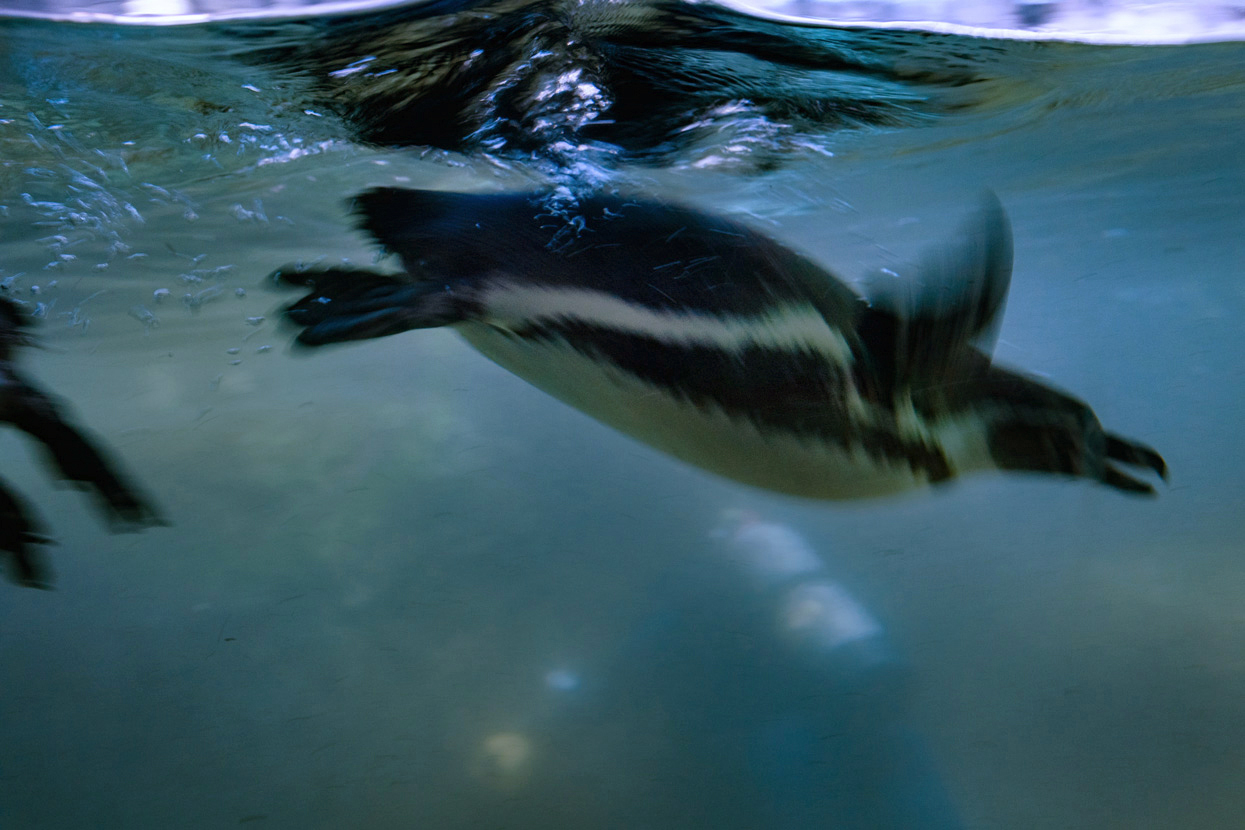

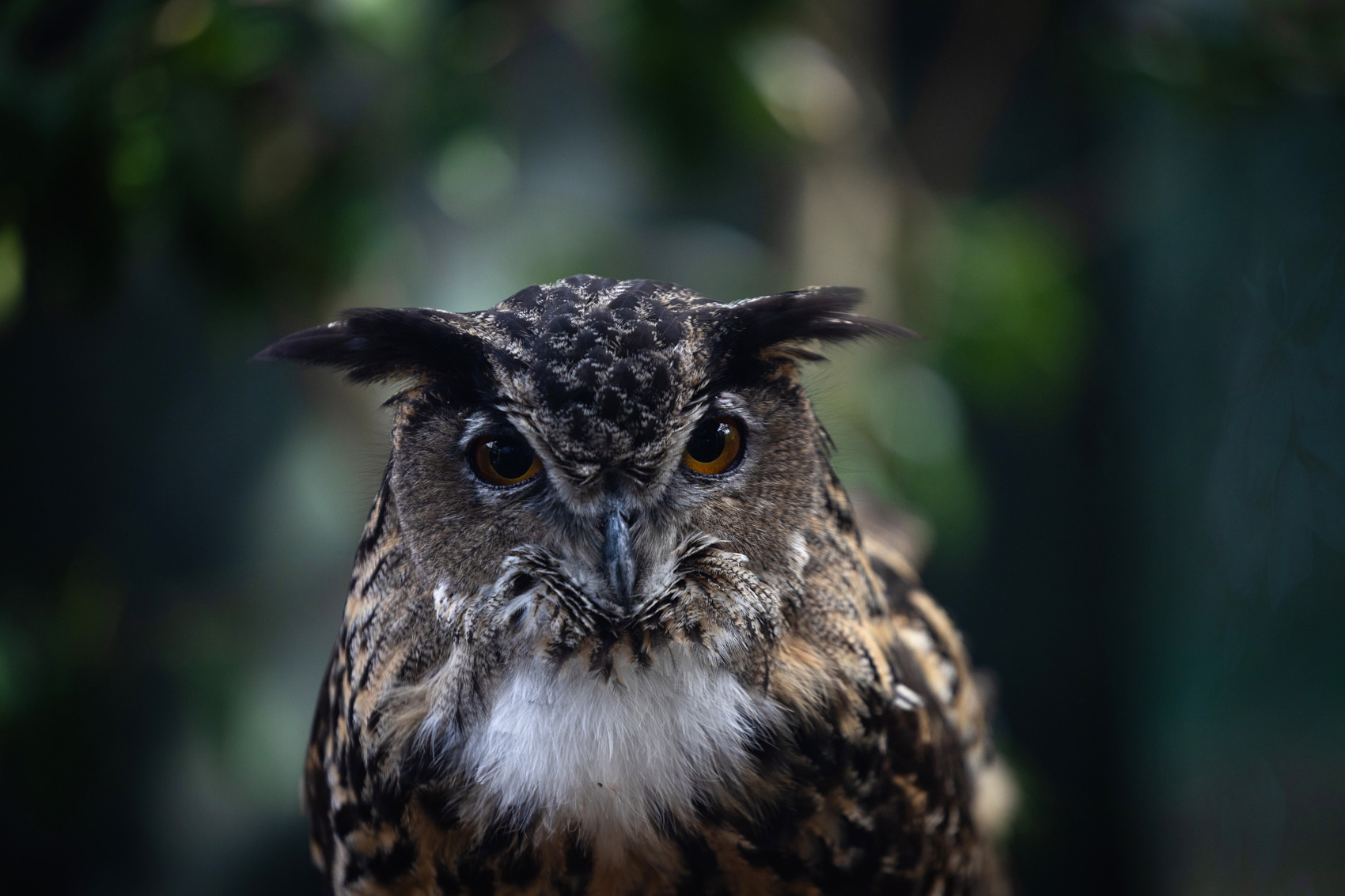

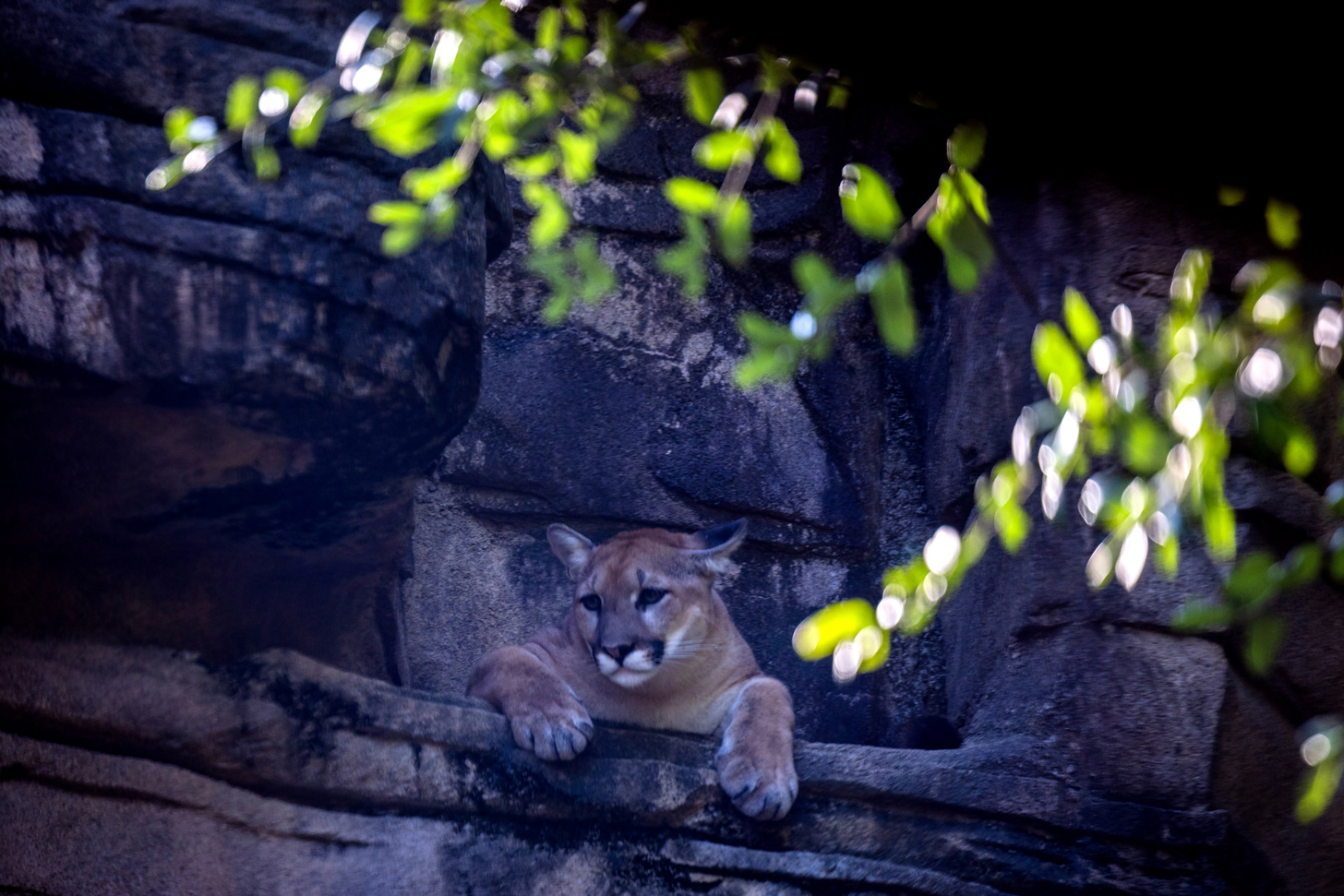
“They did not care,” she says, laughing. “That’s not typical of zebras to react that way, but our zebras are just awesome. They’re the most calm zebras on the planet.”
When she checked in on them Monday morning, they were “just chomping on leaves.”
It is weird for the animals to be without visitors this week, Cornelius notes. They can sense something is different; something is missing. But as the storm falls further into the rearview mirror and staffing levels increase, the animals greet their keepers with their usual levels of familiarity and friendliness.
Inside the new Galapagos Island exhibit, penguins spent much of Thursday morning diving through the water as their keepers underwent their weekly cleaning of the enclosure, buffing algae off rocks. The penguins love the feel of the air bubbles being emitted from the keepers’ dive equipment and they zip and flit through that bubble stream over and over again in a high-speed bubble-bursting ballet.
Galapagos, a $72 million exhibit that opened just last year, sustained more damage than any other exhibit within the zoo. As the rainwater mounted outside, it trickled past the sandbags and down the incline where zoogoers wander below the sea lion exhibit through a much-beloved tunnel. On Thursday morning, a crew of workers crouch with hammers in hand, punching out sheetrock to reveal tired puffs of pink insulation, which is carefully rolled and tucked into garbage bags. It will take a few days to repair this part of the zoo, and it’s likely, Wallace says, that when the zoo does reopen, sections of this exhibit will remain behind barricades to ensure guest safety. The children’s zoo will remain closed for at least several more days, Wallace adds.
A lasting impact?
The damage will of course take a financial toll on the zoo, though it’s too early to assess the magnitude of such costs. But in addition to the physical work that needs to be done, other financial hits loom: Typically this week, the zoo would expect tens of thousands of ticketed entries, Wallace says, an amount that quickly stacks into hundreds of thousands of dollars.
The zoo has insurance, and the Association of Zoos and Aquariums — the national accreditation association to which the zoo belongs — has already reached out to offer funds that Houston can tap. Though Wallace said zoo executives aren’t yet sure whether they will take the AZA up on that offer.

“It’s early in the year for that,” she says, noting that Beryl begins with a B. Who knows what other kinds of storms could bloom in the warm waters of the Gulf this year?
In years past, when the zoo has had to close for extended periods, like after Hurricane Harvey or Winter Storm Uri a few years ago, the zoo was able to recoup some of its losses through a mix of philanthropy and — yes — an increase in ticket prices. It’s too early to say exactly what formula the zoo will use this time to pay for the costs of surviving a hurricane.
As of Thursday, Wallace says, it’s too early to know a lot of things.
But one thing is abundantly clear: The elephants are smiling.


